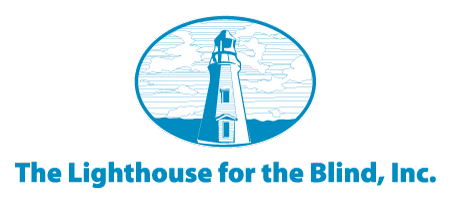64th Annual Blinded Veterans Association Convention
Last week I attended the 64th Annual Blinded Veterans Association Convention in Portland, Oregon.
The conference kicked off with a presentation by Veterans Administration Secretary Eric Shinseki. He spoke of three main focus areas: accessibility, backlog, and homelessness. By accessibility he meant the ease with which each veteran can access the services they are entitled to. He said that of 23 million eligible veterans, only about 8 million receive the services they need.
Turning to backlog, Eric said that they measure this in terms of claims that are over 120 days old. When he came on board in January, there were around 487,000 cases in backlog. The number now is down to 300,000 cases. In July 85,000 cases were closed, but 88,000 new cases were opened as President Obama broadens the parameters of eligibility.
Homelessness among blinded veterans was also a big focus during the conference. Eric mentioned that there would be homeless veterans sleeping on the streets of Portland that very evening. Currently there are 131,000 homeless veterans in the United States. Eric and President Obama have pledged to bring that number to zero in five years through a multi-pronged attack, focusing on mental health, substance abuse counseling, and access to affortable housing.
The Lighthouse contributed $5,000 in support of Operation Peer Support (OPS). OPS works to bring recently blinded veterans from the conflicts in Afghanistan and Iraq together at the annual convention. This year 11 blinded veterans and many family members attended. The OPS veterans enjoyed some great recreational activities, including white water rafting on the Deschutes River, as well as sessions focusing on the newest assistive technology for people who are blind and briefings on the supports available to them through the Veterans Administration.
I was on an employment panel Wednesday afternoon for the OPS group. I focuses on the message that blind people can successfully pursue nearly any imaginable career using the correct tools, technology, and with a solid grounding in blindness skills.
Thursday evening the favor was returned as a blinded veteran from Fayetteville, North Carolina, Dexter Durrante, schooled me in how to use my new KNFB Reader Mobile Cell Phone. I now know how to put contacts in my phone and how to check missed calls – Thanks Dexter!
Friday afternoon was the Father Carroll memorial lecture by Colonel Donald Gagliano, the new director of the VA’s Eye Care Center of Excellence program. The Colonel is also an eye surgeon and talked about the fantastic battlefield emergency care people now receive, saving lives, but resulting in more survivors with disabilities. Father Carroll, namesake for the annual luncheon lecture and a pioneer in blindness services, helped found the Blinded Veterans Association in 1944. Prior to 1944, blind people used the white cane as a symbol of blindness only, holding it across their bodies in public. Father Carroll, working with newly blinded WWII service men, turned it into a mobility tool by introducing the techniques still used today with the long white cane.
Father Carroll also stared the Carroll Center for the blind in Newton, Massachusetts. The Lighthouse currently partners with the Carroll Center and uses their distance computer training program designed for blind computer users.
During the Father Carroll lunch, I chatted with Bob Campbell, a district director from Kansas City. I learned that the BVA is divided into six districts, with over 50 regions within these districts. There are six district directors who serve on board. In addition, five board officers are elected from the membership at large. There are approximately 30 staff people whose salaries are covered by fundraising.
Next year’s BVA conference is in Washington, DC, and I am very much looking forward to continuing to build our relationship with this fine organization.
– Kirk Adams, President and CEO, Lighthouse for the Blind, Inc.


